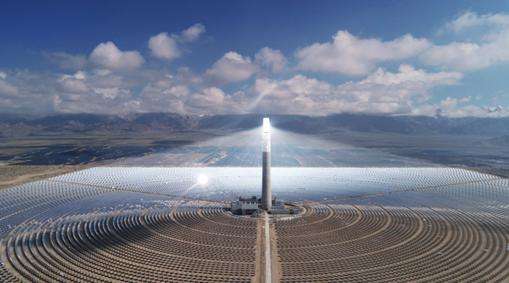The wind load type coefficient is a parameter that describes the force exerted by the wind on an object and is related to the shape, size, layout of the object, wind speed and other factors.
1. The wind load type coefficient is a dimensionless value, generally represented by the symbol Cw. Wind load type coefficients are widely used in wind power generation, aerospace, construction and other fields.
2. The size of the wind load type coefficient depends on many factors such as the shape, size, arrangement of the object and wind speed. In the field of wind power generation, the wind load type coefficient is one of the important parameters for evaluating the performance of wind turbines. The higher the wind load type coefficient, the greater the wind resistance of the object and the more electricity it cant generate is important. Therefore, for the design and optimization of wind turbines, it is very important to understand the wind load type coefficient.
3. In the aerospace field, the wind load type coefficient is also one of the important parameters to evaluate the performance of aircraft. The shape, size, layout and flight speed of the aircraft will all affect the size of the wind load type coefficient. For aircraft, reducing the wind load coefficient can reduce the resistance experienced by the aircraft, improve the lift and propulsion efficiency of the aircraft, thereby improving the performance and efficiency of the aircraft.
4. In the field of construction, the wind load type coefficient is also one of the important parameters for evaluating the wind resistance of buildings. The shape, size, layout of the building and construction materials will all affect the size of thewind load type coefficient. Understanding the wind load coefficient of a building can help designers better design the building structure, improve the wind resistance of the building, and ensure the safety and stability of the building.
The application of wind load type coefficient in the field of wind power generation is mainly reflected in the performance evaluation of wind turbines and design optimization:
1. Wind load type coefficient It is one of the important parameters to evaluate the performance of wind turbines. The higher the wind load coefficient, the greater the resistance of the object to wind and the more electricity it can generate. Therefore, for the design and optimization of wind turbines, it is very important to understand the wind load type coefficient.
2. The wind load type coefficient playsa key role in designing the wind resistance capacity of wind turbines. In the field of wind power generation, the wind load carrying coefficient can help designers to better design the building structure, improve the wind resistance of the building, and ensure the safety and stability of the building.
3. The wind load carrier type coefficient is also an important value for calculating the horizontal linear displacement and displacement characteristics of a building under the action of wind load. It can be applied to the dynamic response analysis of building structures to represent the characteristics of the displacement parameters of buildings when subjected to wind loads, thereby calculating the magnitude and order of spatial distribution vibrations. This information is very important for the design and analysis of the building structure and can help thes designers to reduce the risk of structural damage.
What is the surface area of the fan blades of a large wind turbine? If a level 7 wind passes through this fan blade, what is the air volume loss?
In WECS, the graph of wind power utilization coefficient and blade tip speed ratio is obtained: wind energy utilization coefficient = torque coefficient * blade tip speed ratio blade tip speed, Cp = Ct * λ.
The torque coefficient is the blade tip speed ratio. The polynomial function of the tip speed ratio, Ct=a6*λ^6+a5*λ^5+...+a1λ+a0,a0...the value of a6 can be found in some winds. books and papers on power generation, so the wind power utilization coefficient Cp is also a polynomial function of the blade tip speed ratio Cp = a6*λ^7+....a1λ^2 +a0λ Then the wind energy utilization coefficient and thepale. The tip of WECS can be drawn through some software, such as MATLAB Speed ratio graph.
I hope this can be useful to you
The wind energy utilization coefficient of the wind turbine is expressed by CP. Theoretically, the CP will not exceed 0.593. current consumer wind turbines (at 10 meters/second (the highest utilization rate) are generally around 0.45, while level 7 wind is 14-17 meters/second, which exceeds the annoying wind speed of the fan, and the utilization rate will start to decrease, around 0.2-0.4 The sweeping area is related to the impeller diameter. The current diameters of the main impeller are 70, 80. , 93, 105, 115 meters, etc. You can calculate the corresponding sweeping area
In addition, the current power of the main wind turbines is 1500, 2000, 3000, 5000, 6. 000 kW, etc., of which 1,500 and 2,000 represent 80%














